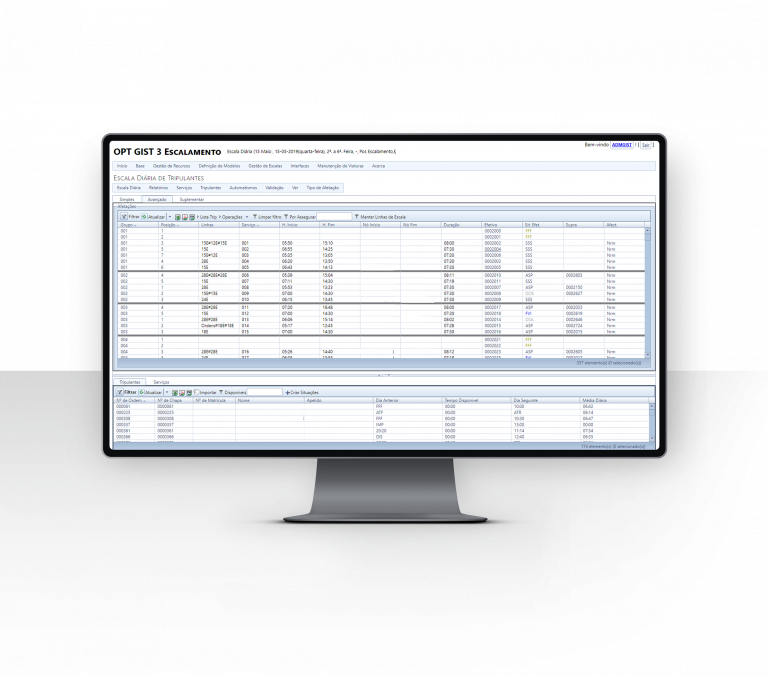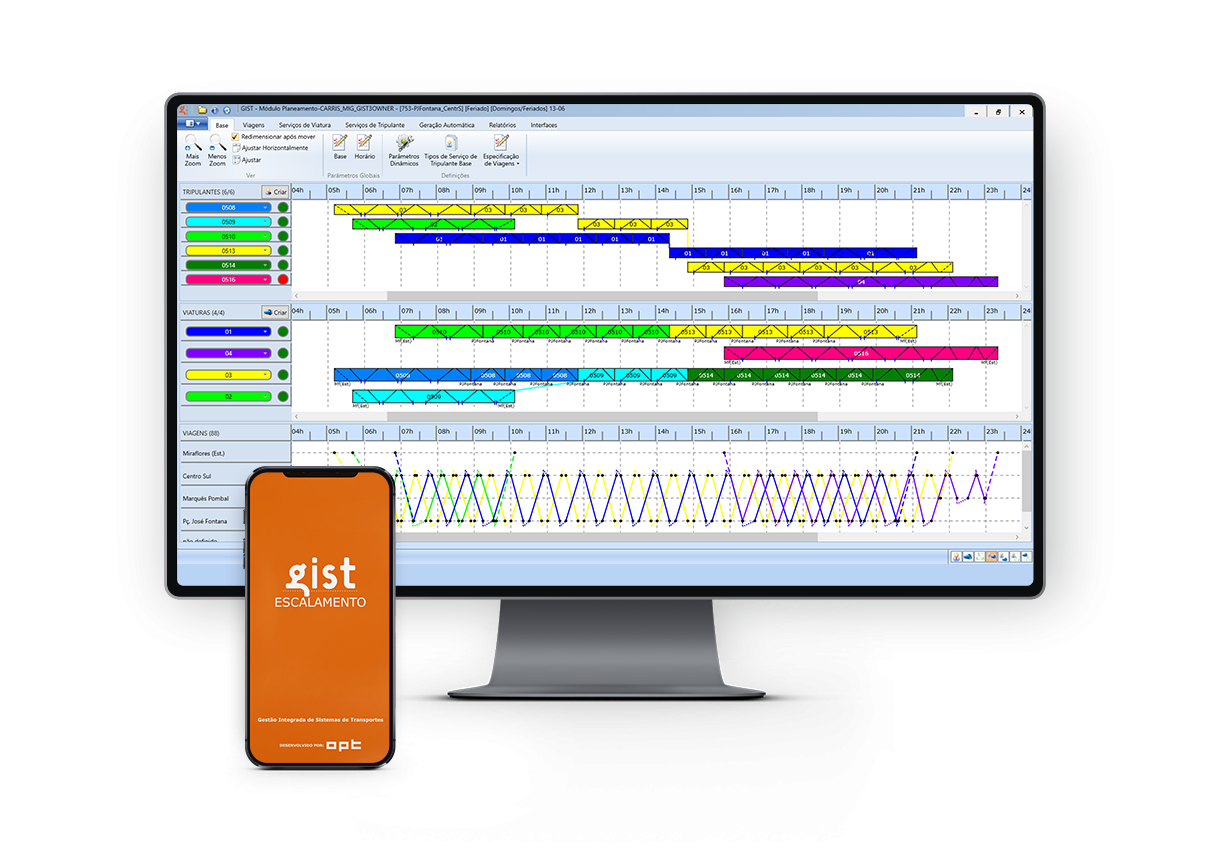The Rostering Module

The Rostering Module: consists in assigning Drivers and Vehicles
The Rostering Module is a web-based system in which its use is associated with the definition of users and profiles with access to pages that determine the individual access to the system’s features.
It is a system for resource management (crew and vehicles) and management of daily schedules of crew and vehicles.
The product is composed of 6 main components in which the main functionalities stand out:
- Resource Management: Contains the definitions and management of crew members and vehicles by defining situations that determine their availability;
- Definition of absence/situation types, their implication and overlapping;
- Definition of absence rotation process (generic rotations);
- Definition of resources (crew and vehicles);
- Management of the availabilities of existing resources through the definition of situations;
- Visualization of global or individual maps of situations or service performed;
- Vacation management;
Definition of Models: Construction of an allocation model based on the defined offer of services allowing for the definition of rotating allocation processes.
- Definition of annual supply plan for types of days and times of the year;
- Definition of the offer through vehicle services and crew member services;
- Definition of a structure containing groups of services and their rotation process through service and/or crew rotation schemes;
- Definition of a theoretical allocation of crew and group positions;

Rostering Management: allows the management of the daily escalation of crew members and vehicles using the defined model and assignment rules. This scheduling can be done on a daily or multiple basis.
- Creation and generation of daily schedules containing the rostering of drivers and vehicles to vehicle;
- Manipulation of daily schedules through operations to change the daily availability of crew members and vehicles, assignment of crew members and vehicles;
- Use of optimized automatic assignment processes of crew and vehicles to services through assignment rules;
- Definition of comparison indicators to obtain comparative analyses between the various states of scale;
- Accounting for scale-related costs user-defined calculations formulas.
Maintenance of Vehicles (Optional): allows the management of the planned maintenance of vehicles, and maintenance plans can be prepared based on the history of Km and types of maintenance.
- Definition of inspection rules and Km usage;
- Definition of maintenance types by time or Km;
- Visualization of predicted maintenance map;
- Dynamic management of predicted maintenance or its manual definition;
- Daily maintenance management interface.
Dispatching & Monitoring (Optional): monitor visualization of vehicle departures and collections and their allocation.
- Parameterization of the tables to be displayed
- Visualization of the departures and/or collections with allocation of vehicle and driver.
